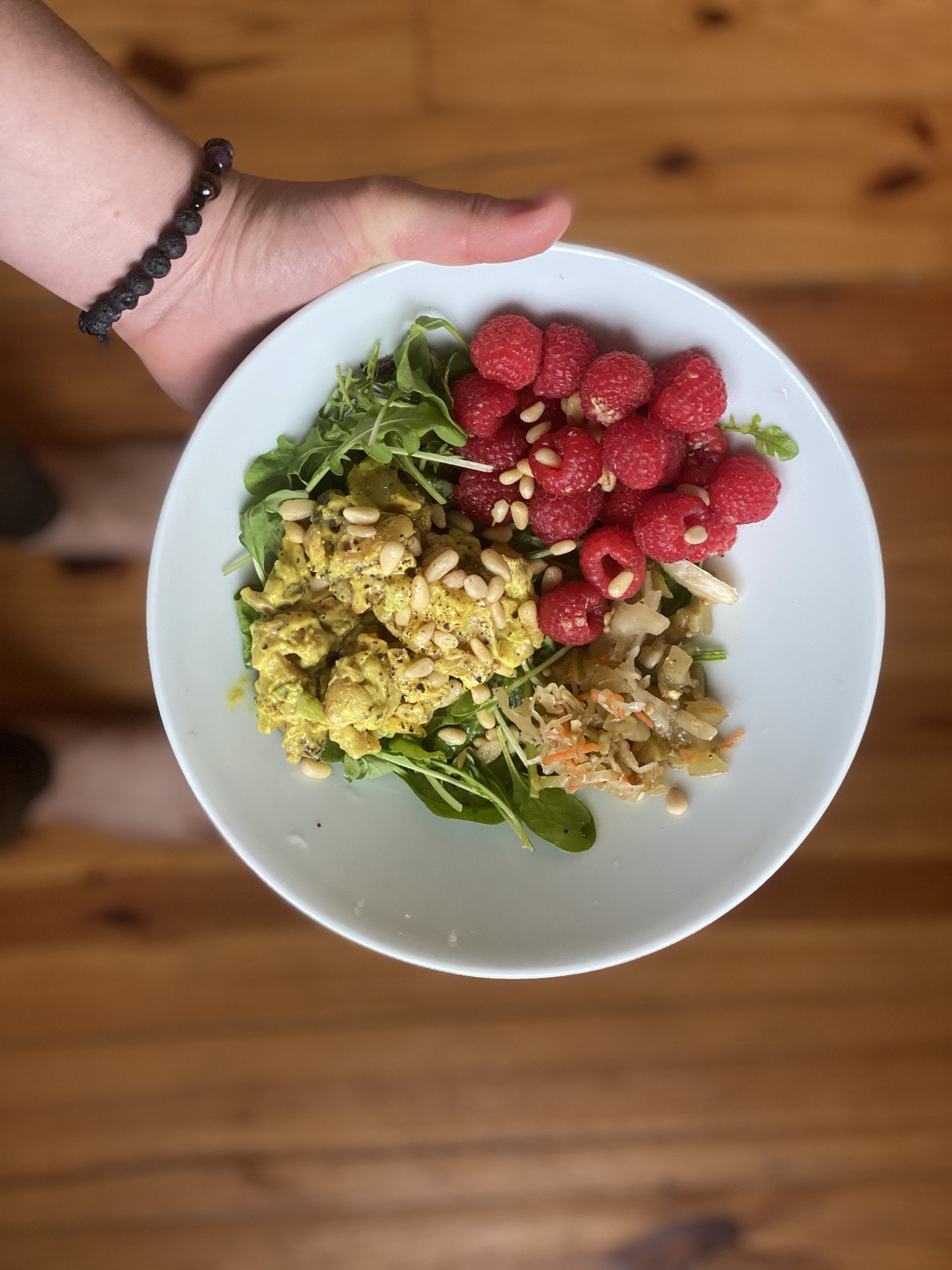You can overeat healthy foods. I repeat, you can overeat healthy foods, especially our starchier friends like potatoes, squash, and rice. We don’t count calories or measure around here, so I teach my clients and classes about how to balance their blood sugar, guidance on how to portion their plates (here’s a visual for reference), and these 11 Tips below to help prevent overeating. Overating isn’t only uncomfortable in the moment but can obviously also lead to unwanted weight gain and burden on the digestive system.
11 Tips to Prevent Overating
- Don’t skip meals or wait longer than 5-6 hours between meals/snacks
during the day. In other words, don’t wait until your blood sugar is so low that you’re ravenous. Low blood sugar triggers food cravings for denser and higher calorie foods. *If you have a practice of fasting and starting your eating window later in the morning, that’s fine. - Aim to eat a balanced meal with real food. Don’t eat carbs alone*. They need friends, like protein, fat, and fiber rich foods. A good question to ask yourself is, “What’s my protein?” For example, if you have grapes for a snack, pair them with a handful of almonds, pistachios and olives, organic raw milk cheese, or grass-fed beef jerky. *If you’re prone to indigestion and bloating, try eating high sugar fruits alone; some fruits might not need friends! I.e. banana, mango, pineapple.
- Drink a glass of water 30 min before eating.
- Use smaller plates to better gauge portions sizes (7-9” diameter). The larger the plate, the more likely we are to fill it up.
- Don’t eat out of chip bags and ice cream containers. Serve it up in a bowl so you’re aware of your portions and don’t get stuck in the mindless eating trap.
- When eating out, and given a larger portion, decide before you start eating how much you want to eat now and how much you’ll take home. Scoot that aside. Do not just keep eating because the amount leftover isn’t enough for another full meal. Waste not, my friend. Take it home and add it to breakfast or lunch the next day.
- Sit down when you eat. Take a couple of deep breaths to help your nervous system tune down to “rest and digest” mode. Try to avoid eating while driving, walking, or standing.
- Take a breath or put your fork down in between bites. This allows time for your stomach and brain to talk to each other to register satiety cues. It can take up to 20 minutes for that signal to hit the brain! So if we wolf our food down in 5 minutes, we’re likely to overeat and not feel the effects until our stomach is physically and very uncomfortably stretched to its max capacity.
- Chew your food well. This ensures the salivary enzymes in your mouth have time to properly break down your food as part of the digestive process. Slowing down and chewing well also helps reduce bloating and belching. Savor each bite! Enjoy the aromas, textures, and all the flavors that hit your senses. Enjoy the company you’re with if you’re eating with others. Whether you’re eating your favorite curry dish or a slice of chocolate cake, my goodness, enjoy every single bite. When you’re present with your food, you’re more satisfied and less likely to overeat.
- Stop eating just shy of being full, about the 80% mark. You should feel satisfied and energized after eating, not exhausted and in need of a nap.
- If you’re reaching for food and you realize you’re not actually hungry, PAUSE. Take this moment of awareness to ask yourself, “What am I really craving?”. Food is the easiest to reach for but it doesn’t mean it’s what we are truly yearning for. Some of our over eating habits have nothing to do with food at all. Allow yourself time to dig into this question whenever you find yourself reaching for food when you don’t really need it. And see if you can satisfy the deeper craving. It might be for connection, creativity, or rest.
Counting calories can be very disconnecting from our bodies and doesn’t leave a lot of flex for what we need in that moment. These needs change over time so the real goal is to “eat real foods, not too much, mostly plants” (Michael Pollan) and to learn to tune into our bodies for everything in between.
Read more here if you’re curious about How to Listen to Your Body.
